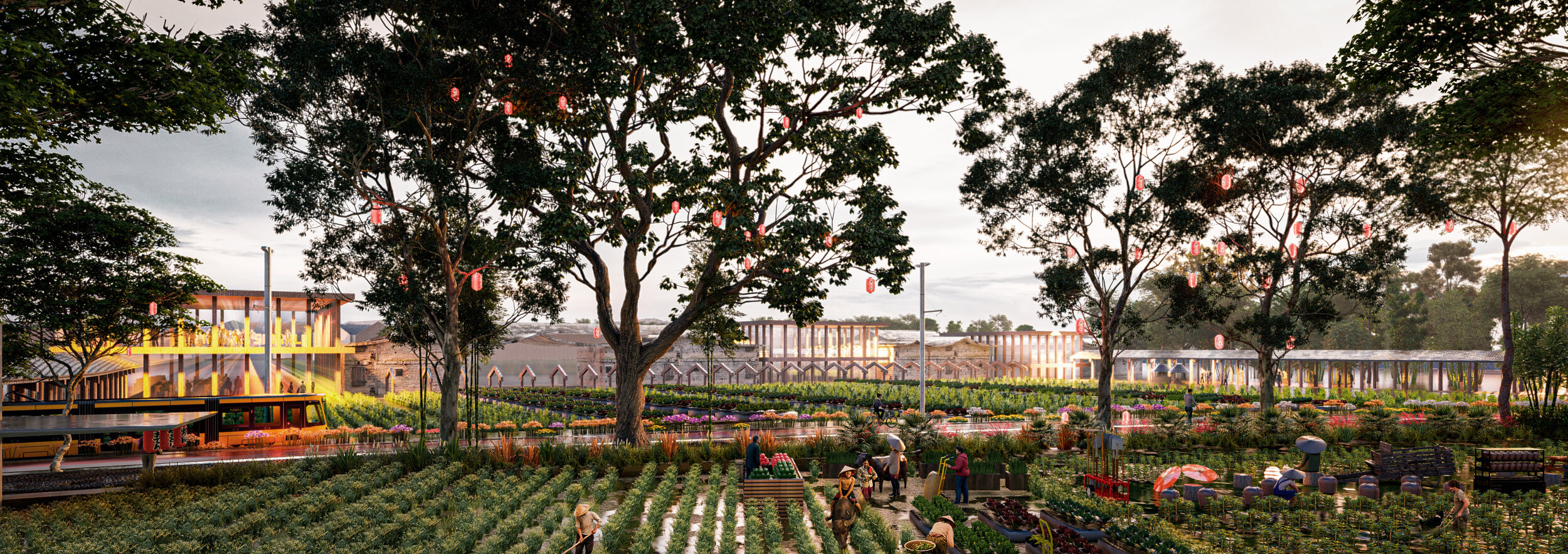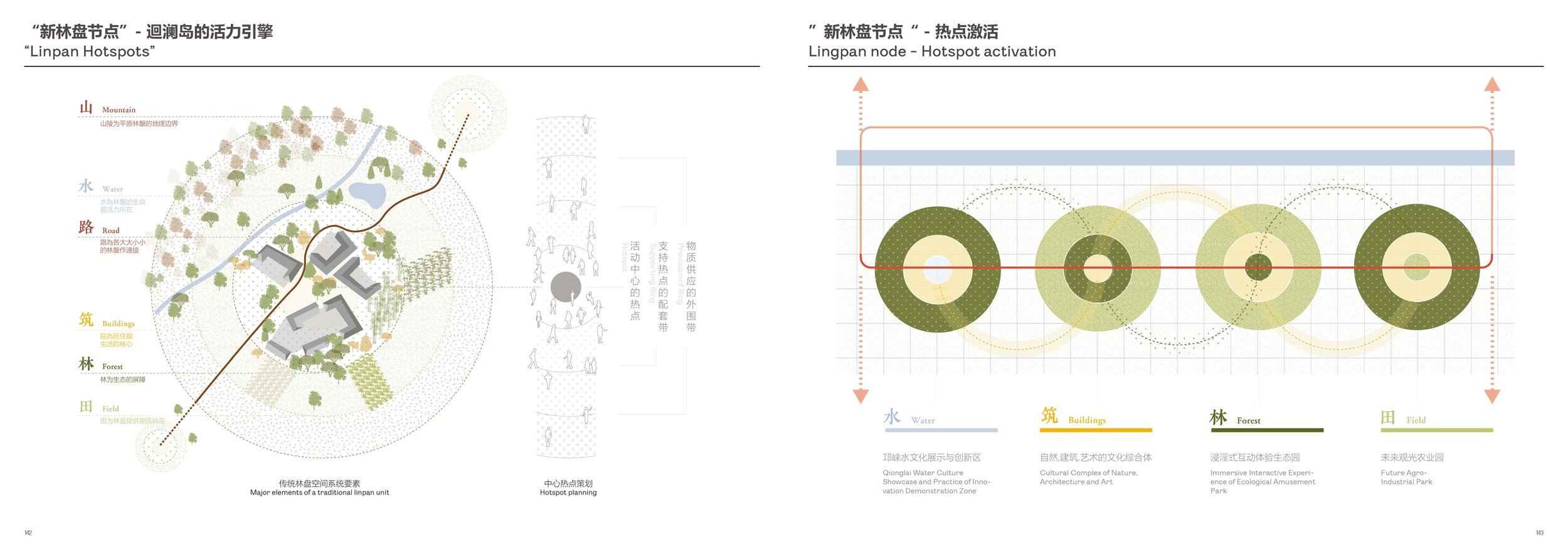DESIGN COEXISTENCE
Location :Qionglai, Sichuan Province
Scale :5.88 km²
Collaboration:Taller, LOLA, ONE
The site is located in the transitional zone between urban and rural area in Qiong Lai, with rich ecological and historical resources. The location and policy advantages pose both new challenges and opportunities for the future the site. To promote the industrial transformation, how to improve the attraction of traditional agriculture and rural industries to talented residents ? How to strengthen local cultural identity to form artistic and cultural characteristics? And how to avoid the same tourism development are issues that need to be considered.
‘The City’ and ‘Nature’ have always been intertwined. We, as human, have long thought they were separate, but now we know better. Our vision for this project is to think of how we can systematically link these two realities.
For the core region, we see it as a key transitional space that binds together rural and urban. Instead of a standard demolition of the existing to allow for supposedly fantastic new, we leverage the adaptation of the existing to form an almost ‘organic renovation’ of what is there.
Based on the current forest texture of Huilan Island, the island space is activated by implanting cultural buildings and constructions as “hotspots”, and by giving new “hot spots” different LINPAN elements - water, buildings, forests, and fields - traditional settlements and culture are integrated and giving new vitality. The four new Linpan hot spots will be used as venues for gatherings, festivals, and various cultural activities. It spreads to the periphery with hot spots as the core, and finally gradually transitions to an island with unique local characteristics that coexists with rivers, symbiosis with culture depends on nature and interweaves with production.













